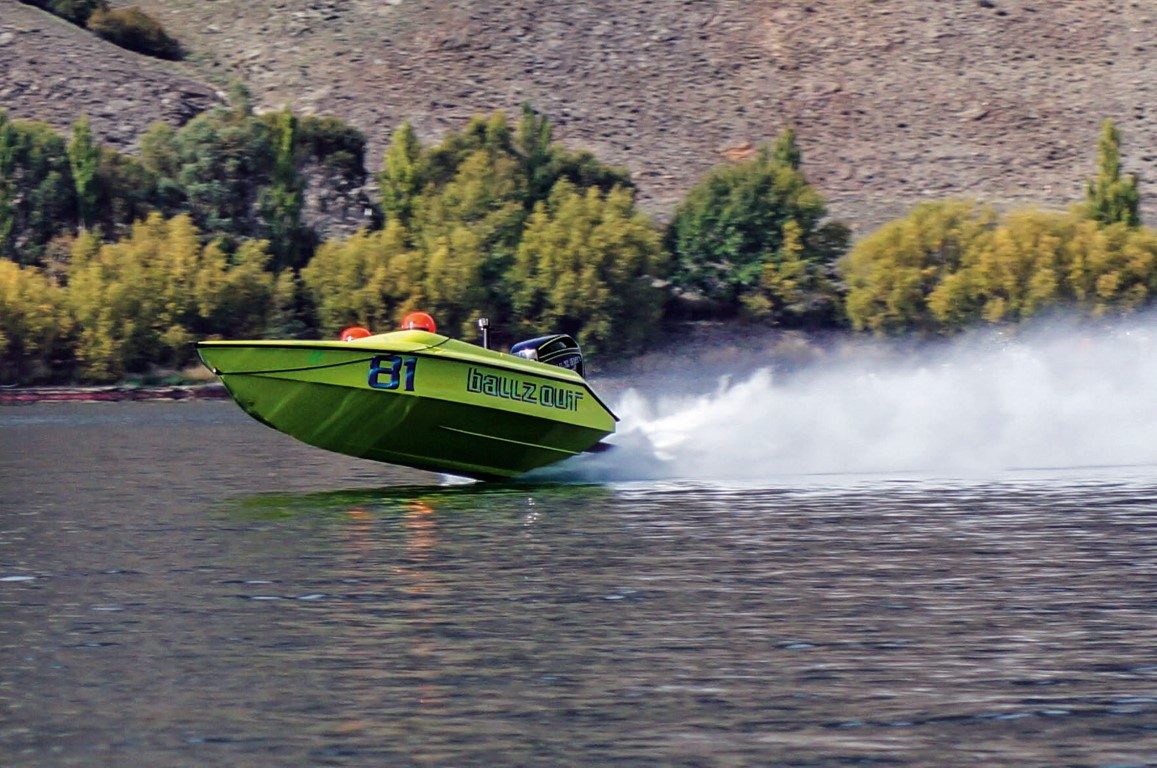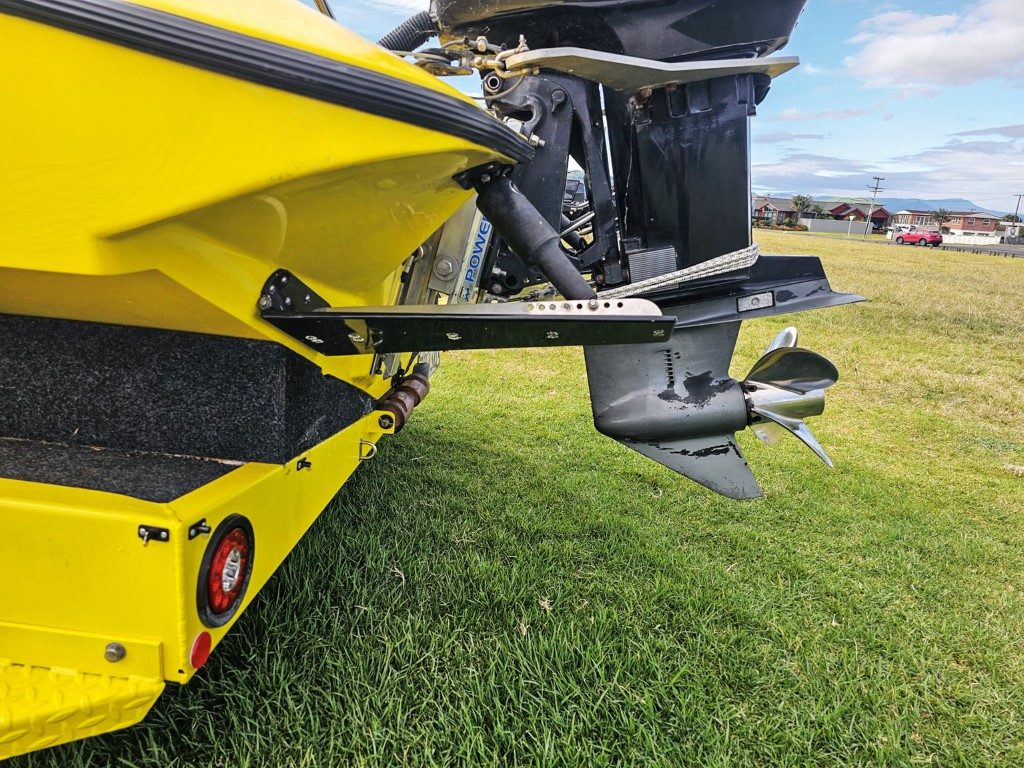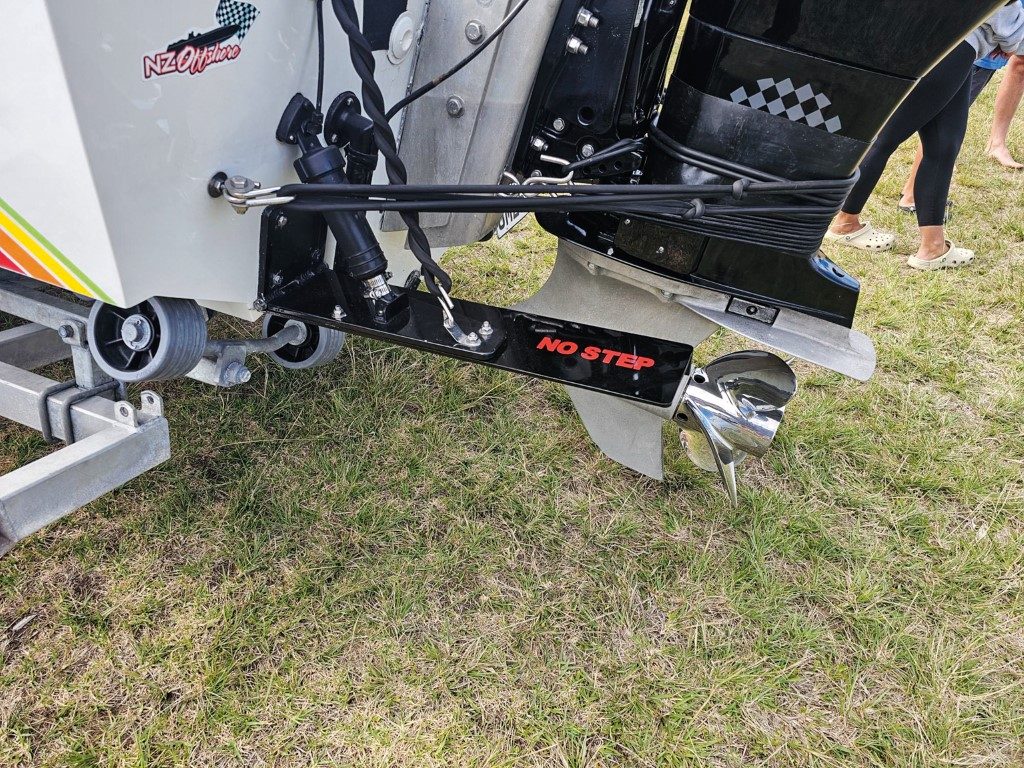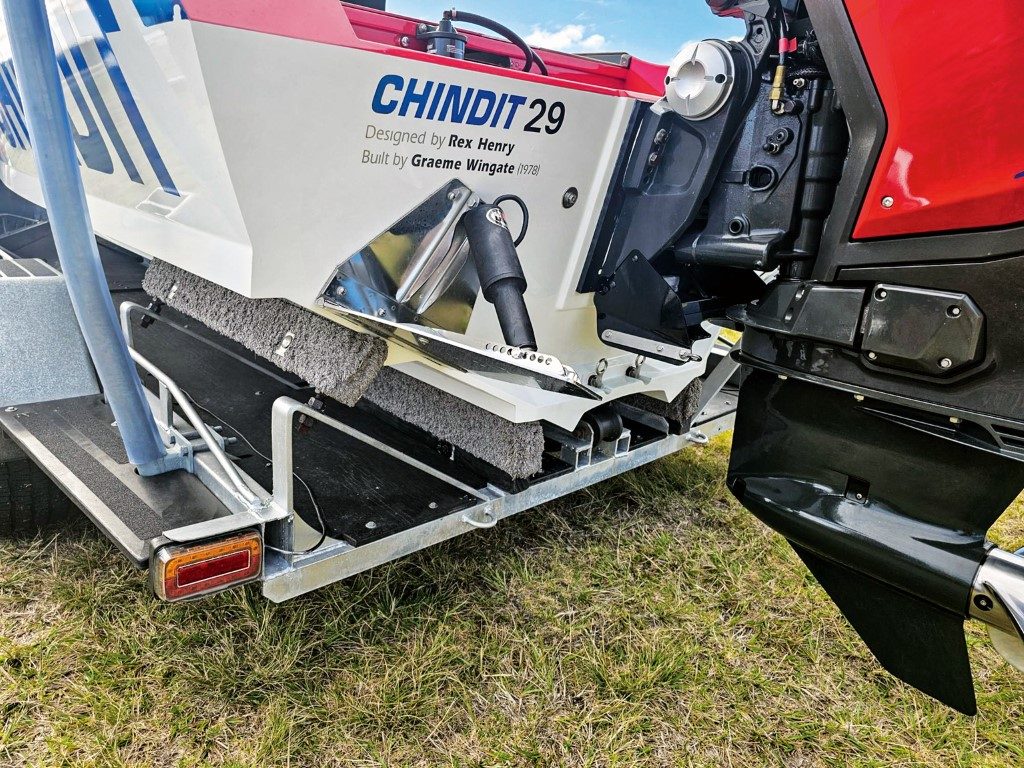

Trim tabs are widely recognised as a safety item that allow boats to run flatter and therefore faster in bigger seas, writes Ryan Archer.
Their function is well understood, and they should need little introduction, but in the racing scene they can also be used to assist with correcting chine walking, decrease the risk of blow over and alter the hull’s angle of attack through the water. Used correctly for racing, trim tabs allow a boat to run flat, fast, and safely. At speeds north of 60mph the risk of a blow over (where the bow lifts and the boat flips onto its back) increases exponentially. A trim tab hanging off the back of the hull acts a little like training wheels on a bicycle, catching the bow lift before it is too late.

Trim tabs should always be used in conjunction with engine trim, with the overall goal of having the prop-shaft(s) running parallel with the waterflow. Generally speaking, a propeller is designed to have water running over it square with the hub and any time this is not the case you get increased propeller slip. There are instances when prop slip can be helpful, but when you’re heading to the last 10% of your running speed any increase in slip results in a drop in overall speed and performance.
Adjusting the angle of attack is a more delicate process of balance than just trimming alone, but it’s a great alternative to carrying ballast (weight) to balance a boat and even more important when conditions are rough.

Trim tabs are also used in the racing scene to help give the effect of extending the hull. For those who run larger, heavier motors hung on jacking plates which often upsets the natural forward/aft balance of the boat, especially at racing speeds, trim tabs are used to help carry the extra weight, allowing a smaller boat to handle much like it did with a smaller lighter outboard. This is probably most clearly explainable by looking at Mercury’s older 2.5L 225hp two-stroke outboards versus new large displacement four-strokes of today. A 2.5L 225hp weighed in at approximately 186kg in standard configuration, compared to today’s high performance four-strokes which can be 240kg or more. That’s a solid 20% or more additional weight hanging off the transom, and with hulls weighing as little as 300kg, this can make a significant difference in the attitude of the boat.

Trim tabs come in all shapes and sizes and can be fitted in a variety of ways. Among today’s racers there is plenty of debate around whether they should be fitted in line with the shape of the hull (as has been standard for years), or gravitationally level. Traditionally, most readers would be familiar with trim tabs fitted on pleasure craft to conform with the shape of the hull. However, in the racing scene we are seeing more and more racers playing with horizontal installations, predominantly when competing in fair weather events, to help maintain lateral stability especially in cross winds, helping prevent the hull being blown off its pad bottom.

The clear and obvious downside to trim tabs is the increase in drag that they create – more wetted surface area equals more drag and therefore less speed potential. In the case of larger displacement four-strokes there is a fine trade-off between increased drag and increased engine displacement and/or torque.
One thing is for certain, there is no universal rule when it comes to trim tabs – each installation will be specific to the type of craft and the size of the engine.
The racing community is very welcoming and always happy to share experience, so don’t be shy about asking. Some of the best testing can be done simply by observing others.





